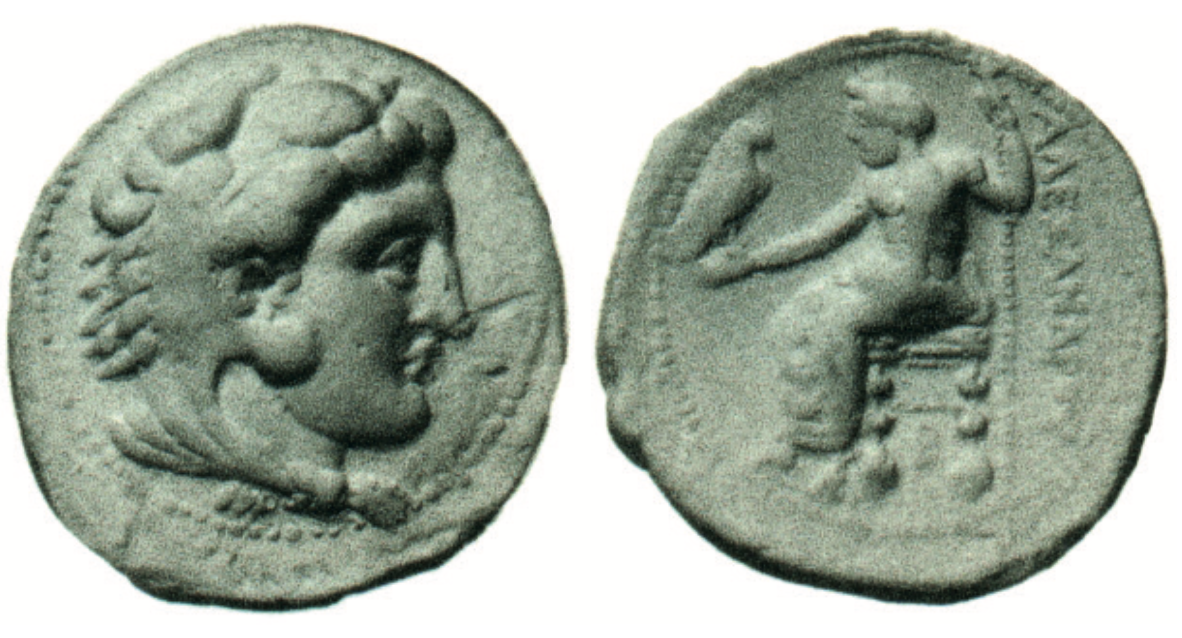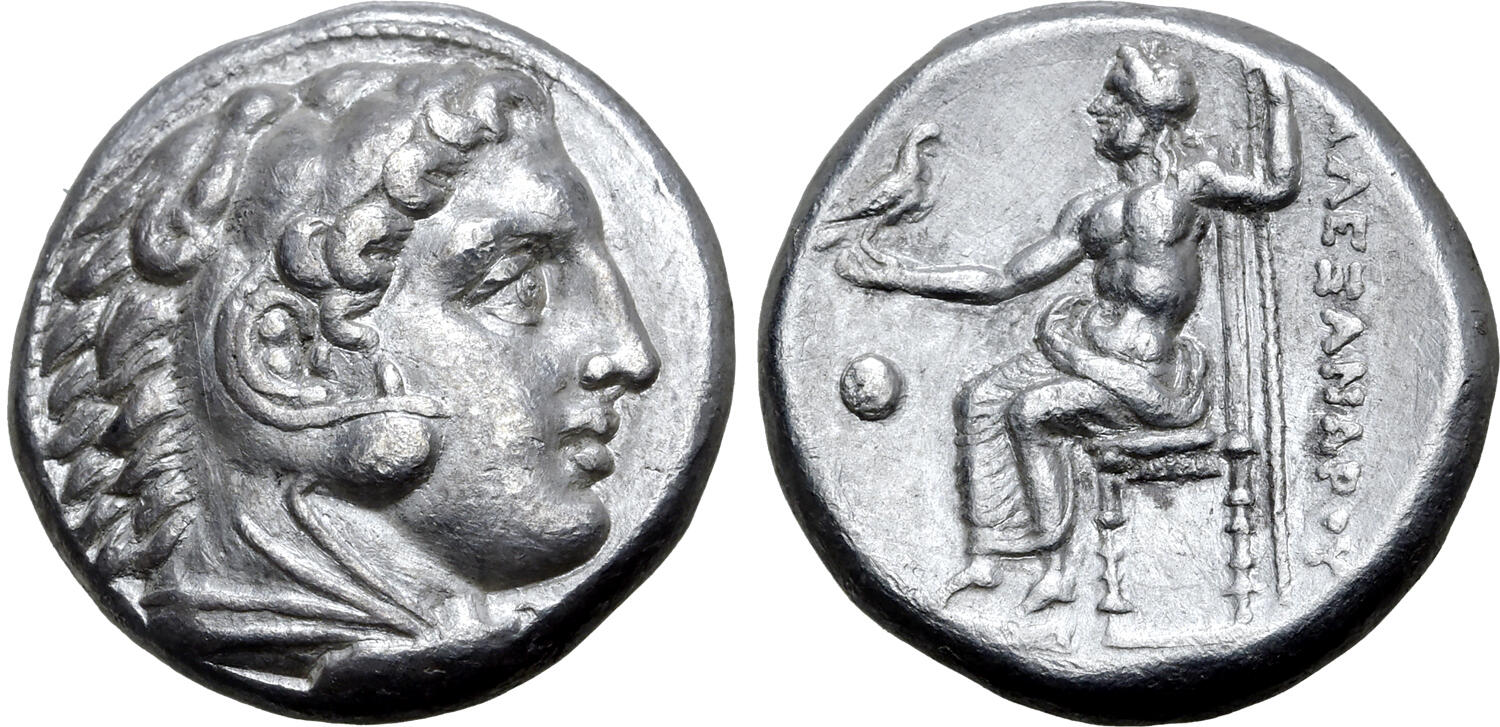333 BCE - 327 BCE | ΑΛΕΞΑΝΔΡΟΥ
Overstriking coin
Callatay 2021 9.png
Overstruck variety
Alexander the great tetradrachm.jpg
[1]
Description
| ObverseInscription or printing placed on the obverse.:
|
Head of unbearded Herakles to right, wearing lion skin headdress, paws tied beneath chin. Border of dots.
|
ReverseInscription or printing placed on the reverse.:
|
ΑΛΕΞΑΝΔΡΟΥ (Greek) Zeus seated left on throne, right leg drawn back, his feet resting on a low footrest, holding long pearled scepter in his left hand and, in his right, eagle standing right with closed wings. Lettter Β in left field and ΑΙ under the throne.
|
Mint and issuing power
| MintIdentifies the place of manufacture or issue of a numismatic object.:
|
Tarsus
|
Ancient regionAncient region.
|
Cilicia
|
Modern countryModern country: Turkey
|
AuthorityIdentifies the issuing power. The authority can be "pretended" when the name or the portrait of X is on the coin but he/she was not the issuing power. It can also be "uncertain" when there is no mention of X on the coin but he/she was the issuing power according to the historical sources:
|
Alexander III the Great (Argead king, 336-323 BC)
|
Chronology
| FromIdentifies the initial date in a range assigned in a numismatic context. 333 BCE toIdentifies the final date in a range assigned in a numismatic context.. 327 BCE
|
Classical 480-323 BC  periodTime period of the numismatic object. periodTime period of the numismatic object.
|
Physical description
MetalThe physical material (usually metal) from which an object is made.: Silver 
|
WeightWeight of the numismatic object (in grams). in grams: 17.1617.16 g <br />17,160 mg <br />
|
DenominationTerm indicating the value of a numismatic object. Examples: tetradrachm, chalkous, denarius.: tetradrachm 
|
|
|
|
StandardStandard.: Attic
|
References
Description
| ObverseInscription or printing placed on the obverse.:
|
Head of unbearded Herakles to right, wearing lion skin headdress, paws tied beneath chin.
|
ReverseInscription or printing placed on the reverse.:
|
ΑΛΕΞΑΝΔΡΟΥ (Greek) Zeus seated left on throne, right leg drawn back, his feet resting on a low footrest, holding long pearled scepter in his left hand and, in his right, eagle standing right with closed wings. Lettter Β in left field and ΑΙ under the throne.
|
Mint and issuing power
| MintIdentifies the place of manufacture or issue of a numismatic object. ᵖ:
|
|
Ancient regionAncient region. ᵖ
|
|
Modern countryModern country:
|
AuthorityIdentifies the authority in whose name (explicitly or implicitly) a numismatic object was issued. ᵖ:
|
|
Chronology
| FromIdentifies the initial date in a range assigned in a numismatic context. 333 BCE toIdentifies the final date in a range assigned in a numismatic context.. 327 BCE
|
Classical 480-323 BC  periodTime period of the numismatic object. periodTime period of the numismatic object.
|
Physical description
References
| Frequency of overstrikesFrequency of overstrikes:
|
rare and concentrated
|
Level of confidenceLevel of confidence of the identification:
|
|
| RemarksRemarks:
|
“Cette pièce a été surfrappée sur un autre alexandre; on reconnaît au droit, en bas, les ves- tiges de la crinière du lion et l’on distingue au revers, en bas, une partie du corps de Zeus. D’autres exemples de pareilles surfrappes sont connus”
|


